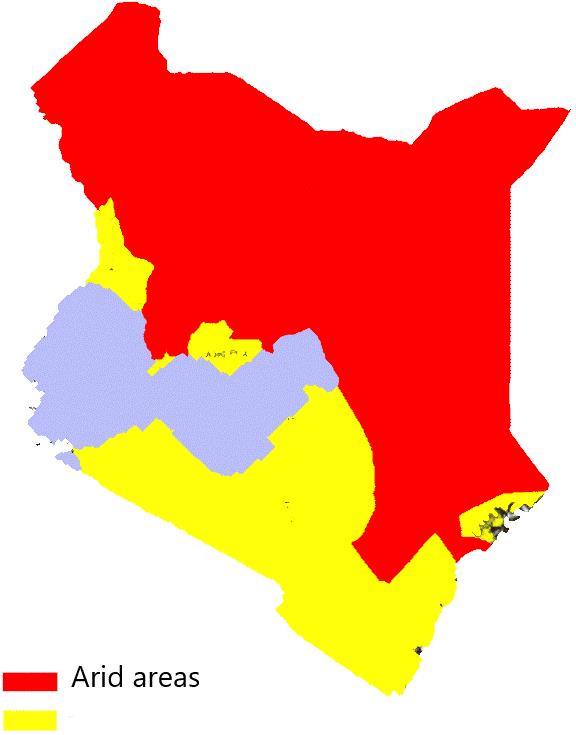In an agricultural based economy, any area that receives low amounts of rainfall and lacks access to underground or surface water for irrigation ends up with very limited options. One such area is Northern Kenya which is characterized by annual average amounts of 150 – 450 mm, making it majorly suitable for nomadic pastoralism.
The Bigger Kenya
Northern Kenya houses 38% of the Kenyan population and covers 70% of total landmass in Kenya. The distinct characteristics of this vast land is the abundance of development challenges such as poverty, hunger, lack of quality health services, limited number of schools, gender inequality and many others.
With limited resources and options for improving the quality of life, one of the easiest ways to escape poverty is through education. However, this has always proved to be a challenge in Northern Kenya.
More than 50% of children in Northern Kenya live more than 11 km from a secondary school, making it very hard for students to make it to school and back home every day. Consequently, there are so many children who are out of school at any given point. A survey of 3 counties in the region once found that more than 50% of households had a child out of school.
There are many factors that contribute to low school enrollment in Northern Kenya and many of these would require multiple solutions cutting across different sectors. For example, the opportunity cost for education in the region is too high. If one enrolls in school, they miss out on being trained on the most relevant skill in the area – keeping cattle. Due to other factors, students may not do well in school and are not likely to get into the formal job market, thus they are neither useful in their home places and cannot sustain themselves in urban areas.
Thus, telling a child to go to school in some parts of Northern Kenya could be equivalent of telling a child from a working class family to venture into football instead of education. Success could come, but as an exception.
Although there is no silver bullet that can solve all the problems, one gap that needs to be exploited in the simplest way possible is use of simple digital technologies.
Mobile Connectivity
At the moment, Safaricom which has the widest network coverage in Kenya has 96% of the population covered with 2G network and 93% with 3G network. In Northern Kenya, the government has intervened to have telcos put up mobile networks in some non-profitable areas like very remote locations and majority of the population have some access to the network.
The area lacks access to electricity but receives a lot of sunshine with at least 8 hours of sunshine every day and this makes it ideal for use of solar power. Generally, solar power would be adequate to power most digital technology devices in Northern Kenya all year round.
With mobile network and possible source of power, what can be done to help improve the quality of education?
Some of the challenges that need to be solved are:
- Low population density making it to have schools within the reach of every child.
- Nomadic lifestyle that means families are sometimes on the move.
- Poor infrastructure making it hard to provide and monitor services.
- Social inequalities making girls less likely to attend school.
- High opportunity cost of education.
- Rampant insecurity and cattle rustling.
- Shortage of teachers, and low quality of teaching due to many untrained teachers.
Most of these problems require government intervention and a long term strategy, but there is a place for engineers to design products that can fit people in these areas. This could be:
- Creating apps that can help these kids learn English in a language that they understand, such as M-Lugha has done.
- Creating digital mentorship channels to encourage young people to stay to school and show them possibilities in education – a sort of penpals.
- Labs that are powered by solar.
- Using content loaded tablets to empower teachers like it is being done by Bridge.
- Using climate data and satellite images to predict where pastoralists will be moving to and thus plan appropriately to keep the children learning.



What do you think?